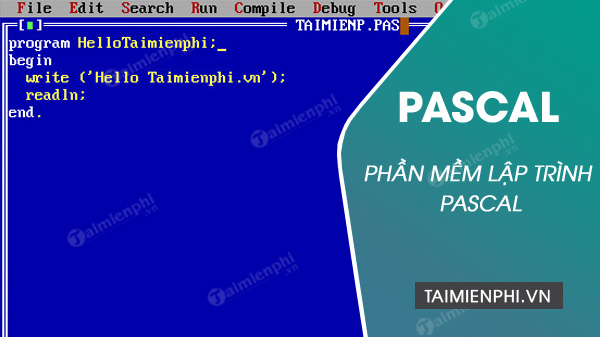

- Turbo pascal 2007 mac os#
- Turbo pascal 2007 software#
- Turbo pascal 2007 code#
- Turbo pascal 2007 iso#
The Morfik compiler is incorporated into the company's AppsBuilder IDE and allows Object Pascal code to be used in implementing code that will execute both in the browser and on the server. The Morfik Pascal programming language developed by Morfik targets Ajax-enabled Web applications.
Turbo pascal 2007 software#

NET support existed from Delphi 8 through Delphi 2005, Delphi 2006 and Delphi 2007, which now has been replaced by another language, Oxygene (see below), which is not fully backward-compatible.
Turbo pascal 2007 mac os#
Embarcadero Technologies, which purchased Delphi in 2008, sells the Delphi IDE that compiles the Delphi dialect of Object Pascal to Windows and Mac OS X.Because Delphi is trademarked, compatible compilers continued using the name Object Pascal. However, compilers that claim to be compatible with Object Pascal are often trying to be compatible with Delphi source code. Borland used the name Object Pascal for the programming language in the first versions of Delphi, but later renamed it to the Delphi programming language.The Delphi language has continued to evolve over the years to support constructs such as dynamic arrays, generics and anonymous methods Versions
Turbo pascal 2007 iso#
These were inspired by the ISO working draft for object-oriented extensions, but many of the differences from Turbo Pascal's dialect (such as the draft's requirement that all methods be virtual) were ignored. While code using the Turbo Pascal object model could still be compiled, Delphi featured a new syntax using the keyword class in preference to object, the Create constructor and a virtual Destroy destructor (and negating having to call the New and Dispose procedures), properties, method pointers, and some other things. The development of Delphi started in 1993 and Delphi 1.0 was officially released in the United States on 14 February 1995. When Borland refocused from DOS to Windows in 1994, they created a successor to Turbo Pascal, called Delphi and introduced a new set of extensions to create what is now known as the Delphi language. In 1986, Borland introduced similar extensions, also called Object Pascal, to the Turbo Pascal product for the Macintosh, and in 1989 for Turbo Pascal 5.5 for DOS. MacApp 3.0, for this platform, was re-written in C++. The developers then left the project.Īpple dropped support for Object Pascal when they moved from Motorola 68K chips to IBM's PowerPC architecture in 1994. The development stopped after the 4.01 version because the company was bought by Symantec. Many developers preferred Think Pascal over Apple's implementation of Object Pascal because Think Pascal offered a tight integration of its tools. The IDE includes the compiler and an editor with Syntax highlighting and checking, a powerful debugger and a class library. Larry Tesler oversaw the project, which began very early in 1985 and became a product in 1986.Īn Object Pascal extension was also implemented in the Think Pascal IDE. Object Pascal extensions and MacApp itself were developed by Barry Haynes, Ken Doyle, and Larry Rosenstein, and were tested by Dan Allen. Object Pascal was needed in order to support MacApp, an expandable Macintosh application framework that would now be called a class library. It is descended from an earlier object-oriented version of Pascal called Clascal, which was available on the Lisa computer. Object Pascal is an extension of the Pascal language that was developed at Apple Computer by a team led by Larry Tesler in consultation with Niklaus Wirth, the inventor of Pascal.


 0 kommentar(er)
0 kommentar(er)
